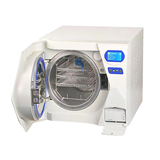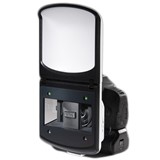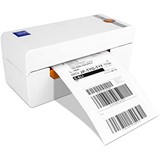Compare types, prices, and fit-out tips for medical storage and filing systems in Australia. Learn how to choose secure, compliant options that streamline your clinic.
Key takeaways
- Storage options range from $1,200 to $8,500+ depending on system type, mobile shelving, lateral cabinets, convectors or high-density compactors.
- Standards matter: Filing cabinets in Australia should meet AS 5079, and medical records must be retained 7 years for adults, until 25 for minors under state laws
- Space savings: High-density shelving can increase storage capacity by up to 50% per m² compared to fixed shelving.
- Hybrid systems (electronic + paper) are common: allow cross-referencing and typically cost between $5k–$20k for small clinics.
- Maintenance costs for mechanical systems (e.g. mobile shelving drives) run around $200–$500/year per unit.
- Finance options such as equipment leasing and office fitout loans offer terms of 2–5 years at ~6% APR.
- Warranties typically include 5-year structural guarantees and 1-year mechanical/electronics support.
- Compliance checklist: state retention laws, secure access protocols, fire-rated cabinets, and privacy principles under Privacy Act 1988.
- Smart space planning boosts workflow, saves up to 50% floor space, and reduces clutter for safer, efficient medical storage.
- Careful installation planning minimises downtime, ensures compliance, and sets the stage for years of smooth medical storage use.
Introduction
Are you looking for the best way to store sensitive medical records, consumables or docs without risking space or privacy? Whether you run a GP clinic, allied health practice or hospital storeroom, choosing the right medical storage and filing system is not just about shelves, it’s about efficiency, compliance and peace of mind.
From mobile compactor systems to filing cabinets, and hybrid paper-digital workflows, this guide breaks down what you need to know, types, prices, operations, maintenance, compliance and common FAQs. By the end, you’ll know exactly what to ask your supplier when you shop.
What is medical storage and filing?
At its core, medical storage and filing refers to systems designed specifically for healthcare settings:
- Physical systems: Lateral cabinets, vertical files, mobile shelving, compactors
- Hybrid/electronic systems: Document management software, RFID tracking, barcode indexing
- Accessories: Colour-coded folders, labels, dividers, secure locking mechanisms
These systems reduce retrieval time, improve organisation of patient notes, ensure legislative compliance, and keep confidential records safe.
Types of medical storage and filing systems
Fixed shelving and cabinets
- Lateral filing cabinets: economical ($1,200–2,500/unit), easy to install
- Vertical steel cupboards: high security, deeper footprint
- AS 5079 ensures rigidity and safety for drawer extension and static stability.
Mobile/high-density shelving
- Systems on rails or tracks
- Increase storage density by up to 50% per m² versus fixed shelving
- Price range: $5,000–8,500/m run depending on access controls or motorised drive
Healthcare filing carts and trolleys
- Portable, lockable units for ward or theatre use
- Prices typically range from $1,200 to $3,500 depending on size, lock and material
Hybrid / electronic document filing systems
- Software-based systems integrated with paper records
- Systems like RFID-enabled KanBan, barcoded indexing, or cloud retrieval cost $5k–20k for small clinic packages plus ongoing subscriptions
Pricing breakdown in Australia
Here’s a breakdown of typical prices (inc GST):
- Lateral filing cabinet (4-drawer, lockable): $1,200–2,500
- Vertical steel cabinet: $2,000–4,000
- Mobile shelving run (3 m high × 1 m deep): $5,000–6,500
- Full compactor (motorised, 6 m run): $8,000–8,500+
- Specialist medical filing cart or trolley: $1,200–3,500
- Hybrid electronic document management solution: $5,000–20,000+ depending on size
Operations, security, and usability
A good storage system isn’t just metal and software, it’s about workflow and security.
Security features to look for:
- Key or coded locks on both individual drawers and full unit
- Interlocks that prevent more than one drawer open at once (safety compliance, particularly in AS 5079 systems)
- Restriction systems using staff access codes or audit logs
Organisational features:
- Colour-coded filing systems (labels, tabs) improve retrieval accuracy by up to 40%
- RFID or barcode indexing speeds up indexing and culling of files
- Ergonomic trolleys reduce strain, particularly for staff retrieving records frequently
Maintenance and servicing
Keeping your system running smoothly usually involves:
- Quarterly checks for mobile rail alignment and drive lubrication
- Annual servicing for motorised shelving systems, $200–500 per year per unit
- Drawer and hinge checks in filing cabinets to prevent jams or sagging
- Label and barcode integrity checks, replace worn labels every 12 months
Well-maintained systems can last 15+ years in high-use environments.
Parts availability in Australia
Common consumables or parts that need replacement:
- Lock barrels and keys
- Drive belts and motors for mobile units
- Rails and wheel bearings
- Barcode labels and folder inserts
Always check if local installers stock spare parts and offer quick repair timelines.
Finance options for medical storage and filing
Medical storage is often part of an office fitout or clinical upgrade. Here are typical finance choices:
- Equipment lease: spread the cost over 2–5 years; monthly payments are tax-deductible
- Office fitout loan: bundled with furniture and cabinets
- Chattel mortgage: own the system but can still depreciate the asset over time
Typical interest rates hover around 6% APR. For clinics seeking smart finance, working with a specialist office-equipment broker in Australia can get you customised quotes quickly.
Warranties and support
Warranties vary by vendor but commonly include:
- Structural warranty: 5 years
- Mechanical/electronic parts: 1 year coverage
- Installation labour: typically included for initial setup
- Optional extended cover: audit logs software or motor drive for up to 3 years extra
Compliance and certification in Australia
Medical filing systems must meet not only physical and ergonomic needs but also legal and privacy obligations:
Retention and destruction
- Clients must retain adult patient records for 7 years from last entry; for minors till age 25 under NSW/VIC/ACT laws
- Secure destruction protocols are mandatory, certificate and log required
Privacy Act and Australian Privacy Principles (APPs)
- Access controls, audit trails, data breach plans and confidentiality compliance are required under the Privacy Act 1988
- Electronic systems must use encryption, password protection and offsite backups
Australian Standards
- Filing cabinets and shelving should meet AS 5079 (based on ANSI/BIFMA X5.2-1997)
- Mobile tracks and compactor units should feature safety interlocks and anti-tip systems
Healthcare audits and accreditation
- Public hospitals follow auditing standards from the Australian Commission on Safety and Quality in Health Care, which track record integrity, access, storage security and governance
Space planning and layout design tips
Smart space planning isn’t just about squeezing in more cabinets , it’s about making your clinic’s storage work smarter for you and your team. The right layout boosts workflow efficiency, cuts down retrieval times, and keeps clutter (and stress) at bay.
Here’s what to keep in mind:
- Plan for clear aisles and access zones. Aim for at least 1 metre wide aisles between shelving or filing units. This keeps foot traffic smooth and safe, allowing staff to move files or equipment without bottlenecks or injury risk.
- Use modular configurations. Modular shelving and filing units let you adapt as your clinic grows or storage needs change. Consider adjustable shelves and mobile units that can be relocated without major disruption.
- Consider workflow zones. Group storage based on frequency of use, keep daily-access files and consumables close to workstations, and archive rarely used documents in less accessible areas. This cuts unnecessary walking and speeds up patient care.
- Think vertical and compact. High-density or mobile shelving can increase your storage capacity by up to 50%, without needing extra floor space. This is especially useful in tight Australian clinics where every square metre counts.
- Don’t forget ergonomic height. Shelves and cabinets should be reachable without excessive bending or stretching, reducing fatigue and injury risk for staff.
Installation and fit-out process
Buying the right medical storage is half the battle; getting it installed with minimal disruption is just as crucial.
Here’s what you can expect during the installation phase:
- Pre-installation site assessment. Good suppliers will send technicians to measure your space, check floors, lighting, and access points. This helps avoid surprises and ensures smooth delivery.
- Delivery logistics. Large mobile shelving or compactor systems may arrive in multiple pieces. Coordinate delivery timing to avoid clashes with busy clinic hours or patient appointments.
- Assembly and installation time. Expect anywhere from a few hours for simple cabinet installs to 1–2 days for complex motorised or mobile systems. Your supplier should provide a clear timeline upfront.
- Minimising downtime. To keep your clinic running smoothly, plan installation during off-peak hours, weekends, or public holidays if possible. Some clinics set up temporary filing zones to maintain access during the transition.
- Post-installation checks and training. Once installed, suppliers typically perform safety checks, ensure locking mechanisms and drives work smoothly, and may offer staff training on new systems, particularly for electronic or motorised units.
- Compliance and certification. Installation will include ensuring that your system meets Australian standards and safety requirements. Ask your supplier for relevant compliance certificates and documentation for your records.
Remember, a smooth installation sets the tone for years of hassle-free use. Work closely with your supplier and plan ahead to keep your clinic productive and compliant during the fit-out phase.
Buyer FAQs
Q: What’s better for tight clinics, vertical or lateral cabinets?
Lateral cabinets offer quicker file access and better side-by-side viewing in narrow layouts, but vertical cabinets use less floor space per drawer.
Q: Do I need mobile shelving for small practices?
Not always, but if you anticipate growth, want space savings (up to 50%) or need motorised pick zones, mobile systems pay off in time and storage efficiency.
Q: Can I mix paper and electronic filing?
Absolutely, and it’s common. Hybrid systems let staff cross-reference between folders and digital records, improving retrieval speed and tracking. Just ensure your software meets data security and backup requirements.
Q: How long do these systems last?
With basic maintenance, mechanical systems last 10-15 years or more; cabinets often last 20+ years in clinics. Digital systems depend on software support, budget for minimal updates every 3–5 years.
Q: Are there grants or tax breaks available?
Equipment and fitout financing often qualify for instant asset write-offs or accelerated depreciation schedules, check eligibility with your accountant before purchase.
Conclusion
Investing in medical storage and filing systems is about much more than shelving, it’s about safeguarding sensitive patient data, meeting legal obligations, optimising space and workflow, and protecting your clinic’s professionalism. Whether you opt for lateral cabinets, mobile shelving, or a hybrid system, you’ll need to match choice with your clinic size, working style, and future plans.
Take the time to assess your storage needs, compliance obligations, finance options and staff workflow needs. And always check local support for parts and installation before you buy.










-160x160-state_article-rel-cat.png)











